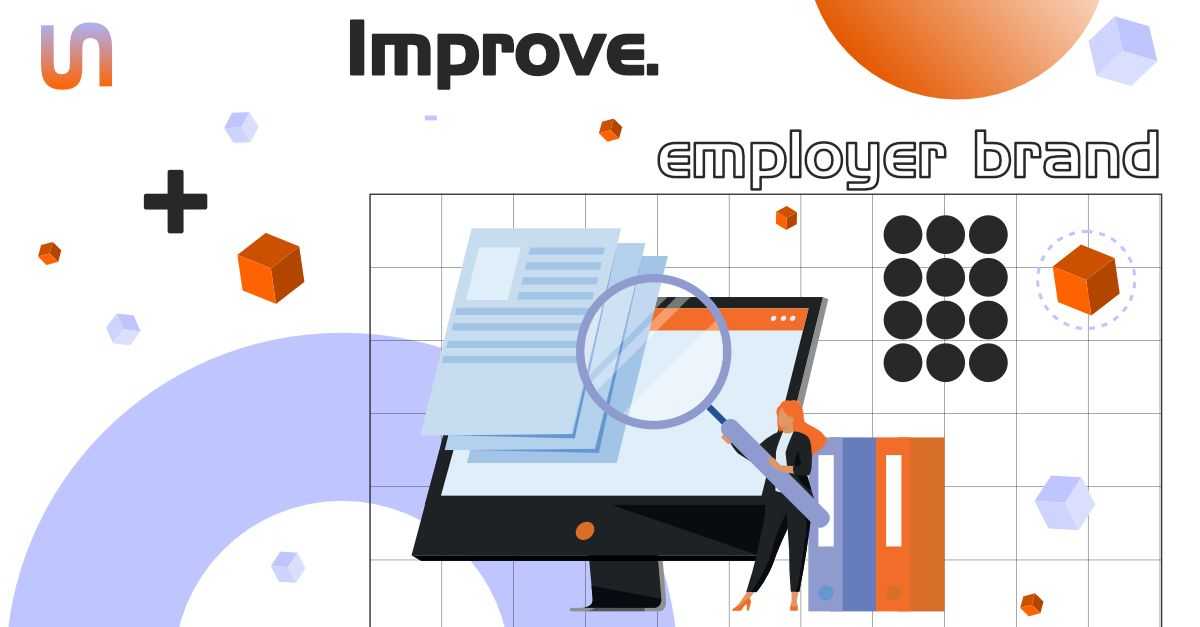3 Tips to Improve the Employer Brand
An EVP, which is something like a clearly defined employer positioning, forms the center of a well thought-out employer brand.

Table of content
We've already gone into detail about why employer branding is so important and what tools it has to offer. But how do you now translate the theoretical best practices of employer branding into concrete initiatives? We'll use three concrete examples to show you how to integrate employer branding into your company's day-to-day operations.
Employer Value Proposition
An EVP, which is something like a clearly defined employer positioning, forms the center of a well thought-out employer brand. There are various methods of communicating the EMP to the outside world and living it within the company. One possibility is a slogan that is directly related to the recruitment process, but also to the HR department. Regardless of how you implement the EMP, you should not take this point lightly. A well-structured process will allow you to use the EMP to make a statement that is valuable to the company:
- Bring together the company's management, create a vision and define the goals - what will positively differentiate you from the competition? What is most important to the company? How do you want the company to be seen? These definitions should not be too detailed, but should form a loose basic framework.
- Organize workshops for each department - this is to work out what is important to employees and how they see the company as part of the basic vision.
- If possible, the data collected should be processed and analyzed by an external agency. This gives a fresh look at the content and prevents the consolidation of short-sighted ways of thinking.
- Based on the agency proposals, the desired tools for the EVPs are chosen: Slogan, statements, social media content.
- Use employee feedback to optimize content for communication. Suggestions and ideas from within the company are an important factor in creating authentic content.
- A creative agency can provide the final polish - again, external input is often a better choice.
- Start with integration on an internal level to secure an initial response. Adjust content as needed.
- Integrate content on career website, at trade shows, and through social media.
To ensure the best results, it is not only important what is communicated, but where and how. For this, a comprehensive communication strategy is the best foundation.
Career Website
For many applicants, the career website is the first point of contact at your company. Therefore, it should be convincing in all areas:
- Design the website to be user-friendly.
- Relevant information should be easily accessible.
- Show on the website which values are important in your company - employee portraits or image films can be used for this.
- Build a personal relationship right from the start. Here, the approach is particularly relevant.
- Job advertisements should be immediately visible - an application should be as uncomplicated as possible!
There are many studies on the classic pitfalls of career websites. One prominent example is duplicate data entry. For example, offer candidates the option to either submit a resume or fill out a form - don't ask for both.
Employees as Multipliers
To reach even more potential candidates, you can use your employees as "employer brand multipliers." The best part about this employer branding strategy is that it costs very little!
In this context, good onboarding is very important. The first period in the company forms the basis for employee loyalty and subsequent recommendations by employees. It starts long before the first working day in the company. Send new employees a welcome message from the future team, invite them to company events and provide all the information needed for the first few days:
- Contact person
- Working hours
- Site map
- Software access
- Important company dates
- Special arrangements - vacation planning
- Canteen plan
Also, encourage your employees to make referrals. For example, offer a bonus for each successful referral. An HR newsletter for employees could advertise a referral program and provide information about new hires or special employee achievements.
Tip: Plan internal events such as a recommendation lunch. Then, together with your employees, scour their social networks for suitable contacts who could soon become colleagues.
Remember, employees serve as ambassadors. Help your employees take on the role of ambassador. For example, create profile pictures for your social media channels and share, comment and tag their posts. Feature your employees in your own content and build a story around them.
We'd be happy to help you create a purposeful employer branding experience. Contact our team and together we will find your ideal candidates.
Contact us
Do you have a question? Just write us a message. We will get back to you as soon as possible.
